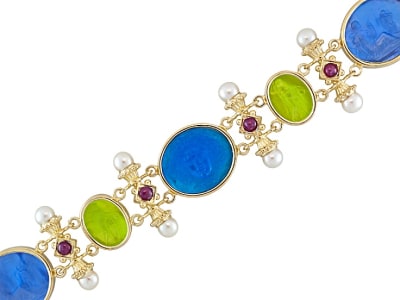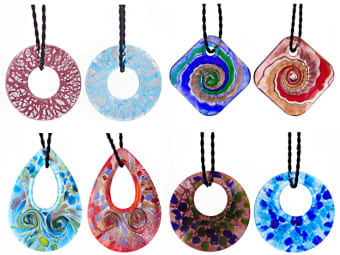The Venetian glass industry dates back over 1,500 years. A 1291 Venetian law relocated all glass making to the island of Murano. The stated reason for the law was to prevent fire from destroying the wooden buildings of Venice. Speculation behind the true nature of the law was to protect the design techniques and innovations of the glass artisans from being stolen and taken to other regions. In the early 1800’s the political climate forced the Venetian glass industry into decline. In the Mid 1850’s a resurgence of glassmaking in Venice commenced. The beginning of the 20th century glass makers focused on reproducing classical styles and the rediscovery of the lost techniques of early Venetian artisans. Modern glass artisans are innovating new techniques and inspiring creative designs to establish Venice as the glass blowing capital of the World.
General Information
LWUV: Varies
Venetian Glass Colors
-
 Blue
Blue -
 Blue
Blue -
 Green
Green -
 Multi-color
Multi-color -
 Multi-color
Multi-color -
 Multi-color
Multi-color -
 Purple
Purple -
 Red
Red -
 Yellow
Yellow
Countries of Origin
Unknown; Italy
Care
Norman care
Species/Variety
Murano Glass
The Italian glass industry dates to the 8th century. In 1291, Venetian glassmakers were ordered to move to the island of Murano to prevent fire from destroying the wooden buildings of Venice. The Murano artists are forever innovating, and they are known for their use of color and intricate glass decorations.
Millefiori Glass
Millefiori is Italian for thousand flowers. Multiple colored and clear glass canes are designed in flower-like patterns and then fused together. The glass rods are then cut in cross section reveal the pattern.


